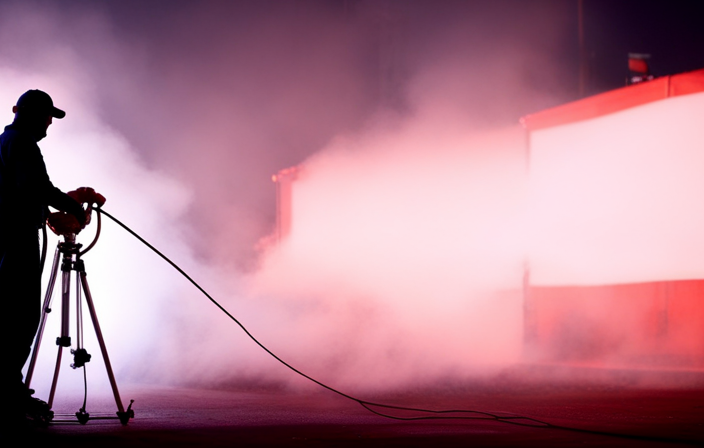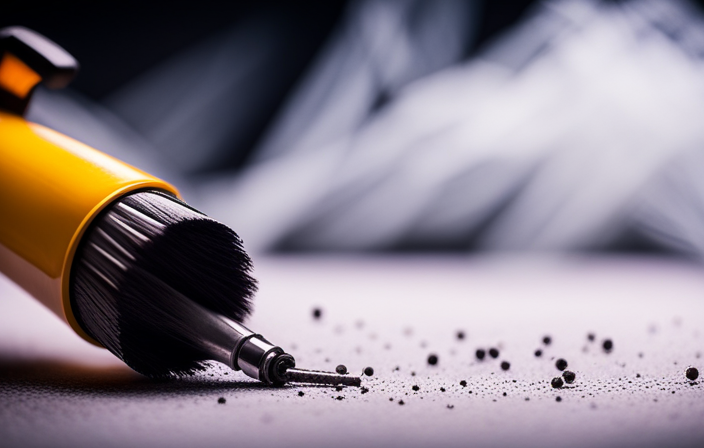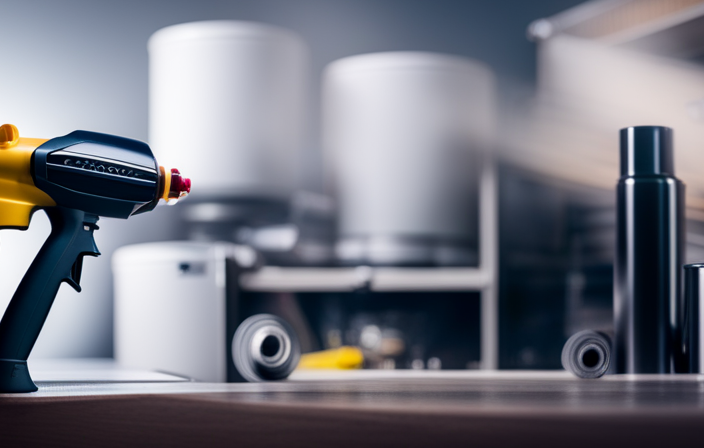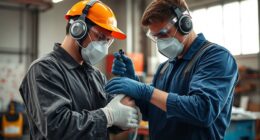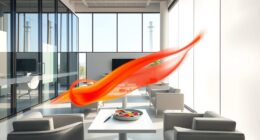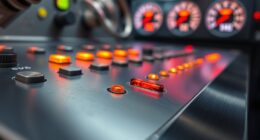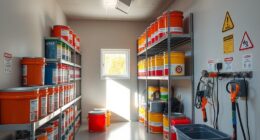The phrase “less is more” is very appropriate when it comes to using an airless sprayer; this statement has never been truer. If you’re tired of wasting paint and want to enhance your project’s efficiency, you’re in the right place. In this article, I will provide several helpful tips on minimizing paint usage with an airless sprayer.
First and foremost, it’s crucial to choose the right nozzle size for your project. A smaller nozzle will result in less overspray and better control over the paint application. Additionally, adjusting the pressure settings on your sprayer can make a significant difference in paint consumption.
Using thin coats of paint is another key strategy. By applying multiple thin layers instead of one thick coat, you’ll not only use less paint but also achieve a smoother, more even finish. And don’t forget to practice proper technique, as this will help you avoid unnecessary paint wastage.
Maintaining a clean sprayer is essential as well. Regularly cleaning and maintaining your equipment will ensure optimal performance and prevent clogs, which can lead to paint waste. Consider using a paint additive or extender to stretch the coverage of your paint and achieve better results.
Finally, protect your surfaces by using a drop cloth or masking tape. This will prevent overspray and minimize the amount of touch-up work required. And before starting your project, always practice on a test surface to fine-tune your spraying skills.
So, if you’re ready to save both time and money by using less paint with your airless sprayer, let’s dive into these tips and make your next project a breeze.
Key Takeaways
- Maintain consistent distance from the surface to ensure complete coverage
- Use drop cloth and masking tape to protect surfaces and create clean edges
- Practice on a test surface to gain confidence and adjust spray pattern
- Adjust pressure and technique for different paint types to optimize coverage and finish
Choose the Right Nozzle Size
Choosing the right nozzle size is crucial to save both time and money. It allows you to use less paint while achieving a flawless and efficient finish. By selecting a nozzle that matches the type of paint and surface you are working with, you can ensure optimal paint flow and coverage.
Proper nozzle maintenance is also essential to avoid clogging and ensure consistent performance. Regularly cleaning the nozzle and checking for any signs of wear or damage will help maintain painting efficiency.
Once you have chosen the appropriate nozzle size and ensured its proper maintenance, the next step is to adjust the pressure settings. This will further optimize the spray pattern and reduce paint wastage.
Adjust the Pressure Settings
Adjusting the pressure settings on your airless sprayer is like finding the perfect balance on a tightrope, ensuring a smooth and efficient application of paint. When it comes to adjusting the pressure, you need to consider both the nozzle selection and the type of surface you are working on.
Higher pressures are required for larger nozzle sizes and rough surfaces, while lower pressures are suitable for smaller nozzle sizes and smoother surfaces. By adjusting the pressure correctly, you can minimize overspray and achieve better control over the amount of paint being sprayed.
This not only helps you use less paint but also ensures a more even and professional finish. As we move into the next section on using thin coats of paint, it’s important to remember that proper pressure adjustment lays the foundation for achieving the best results.
Use Thin Coats of Paint
Achieving a flawless, professional finish is made possible by the magic of thin coats of paint, creating a mesmerizing transformation that will leave you in awe.
- Using thinner paint: By diluting the paint with a compatible thinner, you can achieve a smoother, more even application.
- Applying multiple thin layers: Instead of loading up the sprayer with a thick coat of paint, it’s better to apply several thin layers. This allows for better control and coverage, reducing the chances of drips and runs.
- Greater coverage: Thin coats of paint allow for better coverage, ensuring that you are getting the most out of your paint.
- Faster drying time: Thin coats dry faster, allowing you to move on to the next layer more quickly.
- Improved adhesion: Thin coats of paint adhere better to surfaces, resulting in a longer-lasting finish.
Transitioning into the next section about ‘practice proper technique’, it’s important to remember that achieving the best results with your airless sprayer goes beyond just using thin coats of paint.
Practice Proper Technique
To master the art of flawless painting with your airless sprayer, it’s essential to hone your skills and practice proper technique like a pro, ensuring that every stroke is as smooth as silk. Two key aspects of proper technique are maintaining a proper stance and controlling the spray distance.
First, let’s talk about proper stance. Stand with your feet shoulder-width apart and your body facing the surface you’re painting. This will help you maintain balance and control while spraying.
Next, pay attention to the spray distance. Holding the sprayer too close to the surface will result in excessive paint application, leading to wastage. On the other hand, holding it too far away will result in an uneven coat. Aim for a distance of about 12 inches from the surface for optimal results.
By practicing proper stance and spray distance, you can minimize paint wastage and achieve a smooth finish. Speaking of efficiency, it’s important to keep the sprayer clean and well-maintained to ensure its longevity and performance.
Keep the Sprayer Clean and Well-Maintained
To keep your sprayer clean and well-maintained, follow these steps:
- Regularly clean your sprayer to prevent clogs and issues. After each use, flush it with a cleaning solution or water.
- Pay attention to the nozzle, filters, and hoses, as they are prone to clogs. Use a brush or toothpick to remove any dried paint or debris.
- Inspect the sprayer regularly for signs of wear or damage. Replace any worn parts as needed.
By following proper cleaning techniques and performing regular maintenance, you can ensure your sprayer operates at its best.
Moving into the next section, let’s discuss how using a paint strainer can help you save on paint consumption.
Use a Paint Strainer
To ensure the efficiency of your airless sprayer and achieve optimal paint coverage, it is essential to keep the sprayer clean and well-maintained. However, even with a clean sprayer, particles or debris can still find their way into the paint and affect the final finish. This is where a paint strainer becomes invaluable. Using a paint strainer not only helps to remove these impurities but also prevents clogging in the sprayer nozzle, resulting in a smoother application and less paint wastage. There are different types of paint strainers available, including mesh strainers and cone filters, each offering its own set of benefits. Mesh strainers are ideal for removing larger particles, while cone filters are better at filtering out finer impurities. By incorporating a paint strainer into your painting process, you can significantly reduce paint wastage and achieve a more professional result. Now, let’s explore another technique to further maximize paint efficiency – using a paint additive or extender.
Use a Paint Additive or Extender
Maximize your paint efficiency by incorporating a paint additive or extender into your painting process. Using a paint additive has numerous benefits that can help you use less paint with your airless sprayer.
Firstly, it can improve the flow and leveling of the paint, allowing for smoother and more even coverage.
Additionally, it can extend the drying time of the paint, giving you more time to work with it and reducing the need for touch-ups.
Moreover, some paint additives can act as alternative paint thinners, allowing you to achieve the desired consistency without diluting the paint too much.
By using a paint additive, you can save on paint consumption while still achieving excellent results.
To further optimize coverage with your airless sprayer, it’s important to use overlapping strokes.
Optimize Coverage with Overlapping Strokes
To optimize coverage with overlapping strokes, follow these tips:
- Start each stroke slightly before the previous one ends, ensuring complete coverage.
- Maintain a consistent distance from the surface to avoid uneven application.
- Move the sprayer in a slow and steady motion to prevent overspray.
- Pay extra attention to corners and edges by angling the sprayer appropriately.
- Practice proper technique by using smooth, controlled strokes for an even coat.
By optimizing your coverage with overlapping strokes, you can use less paint and achieve a professional-looking result.
To further protect surfaces, use a drop cloth or masking tape. This will prevent any accidental paint splatters and ensure a neat and tidy finish.
Use a Drop Cloth or Masking Tape to Protect Surfaces
Now that we’ve covered how to optimize coverage with overlapping strokes, let’s talk about another useful technique for using less paint with an airless sprayer.
One way to protect surfaces and minimize overspray is by using a drop cloth or masking tape.
A drop cloth not only catches any paint that may drip or fall, but it also prevents paint from splattering onto surrounding areas.
Masking tape, on the other hand, is perfect for creating clean edges and crisp lines. It helps to define the boundaries of your project and ensures that paint only goes where you want it to.
When using masking tape, make sure to press it firmly onto the surface and remove it carefully once you’re done painting.
By using a drop cloth and masking tape effectively, you can save paint and avoid unnecessary cleanup.
Now, let’s move on to the next step: practicing on a test surface before starting the project.
Practice on a Test Surface Before Starting the Project
Before you start your project, it’s a good idea to practice on a test surface. This will give you more confidence and ensure that you achieve a flawless result.
Here are three important things to keep in mind when practicing with your airless sprayer:
-
Experiment with different paint types. It’s important to test various paint types on your test surface. This will help you understand how they behave with your sprayer. Different paints may require adjustments in pressure or technique for the best coverage and finish.
-
Test different spraying distances. By spraying at different distances from the test surface, you can find the ideal distance for achieving even coverage without wasting excess paint. This will help you improve your spraying technique and reduce paint usage.
-
Evaluate the spray pattern. Pay attention to the spray pattern produced by your sprayer. If necessary, adjust the nozzle or pressure settings to ensure an even and consistent spray pattern.
By practicing on a test surface and experimenting with different paint types and spraying distances, you can become proficient with your airless sprayer. This will not only help you use less paint but also achieve professional-looking results.
Frequently Asked Questions
Can I use an airless sprayer for any type of paint?
Yes, you can use an airless sprayer for various types of paint. The pros include faster application and a smooth finish. However, there are cons like overspray and the need for proper ventilation.
How do I prevent clogging in the nozzle while using an airless sprayer?
To prevent nozzle clogging when using an airless sprayer, it’s important to properly clean and maintain the sprayer. Regularly flush the system with clean water, use a filter to catch debris, and ensure the paint is properly strained before spraying. Troubleshooting airless sprayer issues can also help prevent clogging.
Is it necessary to thin the paint before using it with an airless sprayer?
No, it is not necessary to thin the paint before using it with an airless sprayer. Airless sprayers can handle thicker paints, which is one of the benefits of using them.
What is the recommended distance between the sprayer and the surface being painted?
To achieve optimal paint coverage and minimize overspray, it’s important to maintain a recommended distance between the sprayer and the surface being painted. Additionally, proper surface preparation ensures a smooth and even finish.
Are there any safety precautions I should take when using an airless sprayer?
When using an airless sprayer, it’s important to take safety precautions and use proper technique. Wear protective gear like goggles and a mask, and make sure to follow the manufacturer’s instructions for safe operation.
Conclusion
In conclusion, using an airless sprayer can help you save paint and achieve a professional finish.
- Choose the right nozzle size
- Adjust pressure settings
- Use thin coats of paint
By doing these things, you can minimize waste.
- Practice proper technique
- Keep the sprayer clean
- Use a paint additive or extender
These steps can also contribute to using less paint.
- Optimize coverage with overlapping strokes
- Protect surfaces with a drop cloth or masking tape
Before starting your project, it’s always a good idea to practice on a test surface.
So why not start saving paint and creating beautiful finishes with your airless sprayer today?
